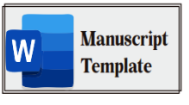PENGARUH TINGKAT KESEHATAN BANK SYARIAH DAN MAQASYID SYARIAH INDEKS TERHADAP PERTUMBUHAN LABA DENGAN GOOD CORPORATE GOVERNANCE SEBAGAI VARIABEL MODERATING
Abstract
Keywords
Full Text:
PDF (Bahasa Indonesia)References
Angkoso, N (2006). Akuntansi Lanjutan. Yogyakarta: Penerbit BPFE.
Dendawijaya, L. (2009). Manajemen Perbankan. Bogor: Ghalia Indonesia.
Ghozali, I. (2013). Aplikasi Analisis Multivariate dengan Program SPSS. Semarang: BP Undip.
Hamidu, N. P. (2013). Pengaruh Kinerja Keuangan terhadap Pertumbuhan Laba pada Perbankan di BEI. EMBA, 1(3).
Handayani, S. (2010). Analisis Kemampuan Rasio Keuangan dalam Memprediksi Pertumbuhan Laba Pada Perusahaan Otomotif yang Terdaftar di Bursa Efek Indonesia Periode 2005-2007. Jurnal Manajemen Maranatha, 10(1).
Indriantoro, N. & Supomo, B. (2011). Metodologi Penelitian Bisnis Untuk Akuntansi dan Manajemen. Yogyakarta: BPFE.
Kasmir. (2014). Dasar-Dasar Perbankan. Jakarta: Raja Grafindo Persada.
Pandia, F. (2012). Manajemen Dana dan Kesehatan Bank. Jakarta: Rineka Cipta
Riyanto, W.F. (2010). Pertingkatan Kebutuhan dalam Maqasid Asy-Syari’ah. Jurnal Hukum Islam, 8(1): 15.
Rivai, V. (2007). Credit Management Handbook: Teori, Konsep, Prosedur dan Aplikasi. Panduan Praktis Mahasiswa, Bankir dan Nasabah. Jakarta: Grafindo Persada.
Sekaran, U. (2011). Research Methods for Bussiness. Jakarta: Salemba Empat.
Sugiyono. (2014). Metode Penelitian Kuantitatif Kualitatif dan R&D. Bandung: Alfabeta.
Supriyanto, (2009). Metodologi Riset Bisnis. Jakarta: PT. Indeks.
Susilo. (2000). Bank dan Lembaga Keuangan Lain. Jakarta: Selaemba Empat.
Taswan. (2006). Manajemen Perbankan. Yogyakarta: UPP STIM YKPN.
Totok, S (2006). Bank dan Lembaga Keuangan Lain. Jakarta: Salemba Empat.
Warsidi, B, & Pramuka, A. (2000). Evaluasi Kegunaan Rasio Keuangan dalam Memprediksi Pertumbuhan Laba di Masa yang Akan Datang: Suatu Studi Empiris pada Perusahaan yang Terdaftar di BEJ. Jurnal Akuntansi, Manajemen dan Ekonomi, 2(1).
Wibowo, H. A., & Pujiati, D. (2011). Analisis Rasio Keuangan dalam Memprediksi Perubahan Laba Pada Perusahaan Real Estate dan Property di Bursa Efek Indonesia (BEI) dan Singapura (SGX). The Indonesian Accounting Review, 1(2): 155-178.
DOI: http://dx.doi.org/10.15548/al-masraf.v3i2.202
Refbacks
- There are currently no refbacks.

This work is licensed under a Creative Commons Attribution-NonCommercial-ShareAlike 4.0 International License.
View My Stats

